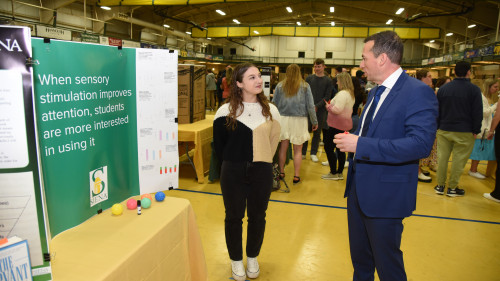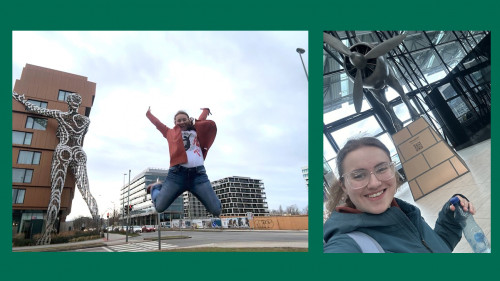

By Mike Clemens '15
If a business owner has a problem, he or she would traditionally turn to a team of professionals who can offer viable solutions. Now, those business owners might turn to Siena College students.
“My students take on projects that the clients are not able to do on their own,” said Paul Thurston, Ph.D., associate professor of management.
Over the last two semesters, students in Thurston’s Research Methods course have been using the management and problem-solving skills they’re learning in the classroom to help small businesses in the Capital Region solve unique problems.
“Business owners have to do their work, so they don’t necessarily have the time or the skill set in-house to do the kind of research that the solution requires,” Thurston said.
The process of assisting a business is a real measure of a student’s ability. At the start of each semester, small groups of Siena students choose a business and a problem to address. They then conduct extensive research, which includes observations, interviews with stakeholders and a close examination of managerial strategies and models that might be useful to their task.
“Our goal is to develop an effective plan of action that we can recommend to our clients,” Thurston said. “These recommendations might be anything from how they can increase customer satisfaction to the engagement of employees and stakeholders. It’s different for each business.”
Thurston’s class has worked with a range of organizations from nonprofits to local businesses and this experience has given his students much to be proud of.
“This class has been extremely rewarding,” said management major Benjamin Patten ’14. Patten is a working professional who is putting the skills he is developing to use. “The things that I’ve learned in class have already helped in my career. It has been a great experience.”
Thurston is confident that this course will be of tremendous benefit to all of his students.
“When students walk into an interview, more often than not, they are asked about their experiences and how they have been able to use skills from class in a real environment,” Thurston said. “A class like this will help a student to say with confidence, ‘I helped businesses to work through difficult problems and to take action to fix them.’ That’s powerful.”

